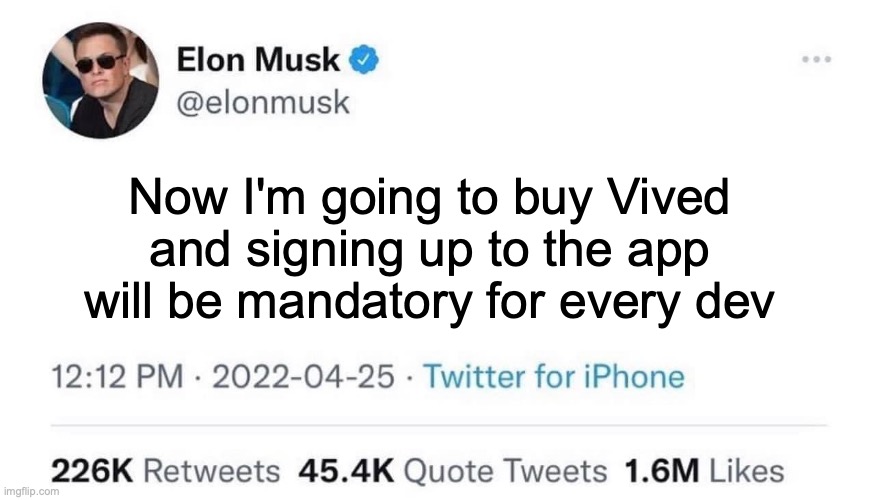Don’t like recruitment forms? Neither do we, especially when they’re designed to be a nightmare. We also don’t like it when big companies stop hiring and chaos starts to reign on one of our favourite social media platforms. Fortunately, there are positives to be found in each of these topics!
Recruitment application forms suck
I don’t know what you think about this, but in my opinion, the job of a tech recruiter can sometimes be very hard. First you try to write the best possible job offer and convince your company that it’s worth including a salary range. Then you try to make any contact with candidates who aren’t in a hurry to respond. After a few days (or weeks) of struggling hard and presenting the advantages of your company, you get the chance to have an online recruitment form filled by the candidate. You wait. You refresh your inbox. You wait. Still no new applications.
All because of that damn application form that drives candidates crazy…
Seriously, these situations happen surprisingly often. Data collected by Appcast shows that up to 92% of users do not complete the form and abort the recruitment at one of the steps. This represents a big financial loss for companies, but also leaves an unpleasant memory in the candidate’s mind.

An interesting study on this topic was conducted by InFlight. It involved recruiters from Fortune 500 companies who were completing the forms sent to candidates. It turned out that it takes less than five minutes to go through all the steps… but requires an average of 51 clicks on various buttons and fields. After clicking on ‘Apply’, users had to click a further nine times to get to the actual form. They were asked to create accounts and set up passwords, enter data placed in an independently uploaded CV (!), and were even asked the same questions twice. This is a real UX nightmare. Not to mention the fact that some of the forms did not contain the company logo, but the logo of the provider of recruitment solution. Gosh.
So we conclude with a hint for recruiters – be sure to check not only on the personalisation of messages to candidates, but also the condition of your forms. Maybe there’s more than one scary bug lurking in there?
Source:

Big Tech halts hiring (even more)
What’s up, man, at Big Tech? No change. The greats of the tech world are cutting recruitment even more in preparation for the recession. Admittedly, the ever-reliable Gergely Orosz proves on his blog that the biggest IT companies hired as many specialists this year as were made redundant in smaller software houses and start-ups (i.e. around 90-95,000), but that doesn’t change the fact that the outlook is worrying:
- Amazon has abruptly halted hiring until January 2023. Presumably only certain departments are affected, but the giant’s move seems strongly spontaneous.
- Meta maintains a hiring freeze now and in the context of 2023. Here, it is perhaps not only a matter of preparing for a recession, but also of cutting costs due to deteriorating performance.
- Google is also not happy with its results this year, so there will not be a sudden rash of job offers until the end of December.
- Microsoft is the complete opposite of the other companies – here the results are good, but not great. The company does not see the need to hire additional specialists and does not seem to be worried about the recession.
Unfortunately, as you know from Career Weekly vol. 3, a hiring freeze can be worse than layoffs. Nevertheless, let’s look for the positives.
Gergely Orosz predicts that specialists in AI, ML and data science, will still be able to count on employment in Big Tech. These are scarce specialisations that, regardless of further developments, should be a “safe haven”.

In my opinion, a longer queue for big companies could also help smaller software houses. There is a chance that the IT job market will (finally) become a little more fulfilled. The digital transformation is still ongoing and could be a huge opportunity for many industries to survive.
Well, unless everyone concludes that it is better to stay in the current job for uncertain times…
Sources:
- https://blog.pragmaticengineer.com/big-tech-hiring-slowdown/
- https://www.itprotoday.com/it-operations-and-management/it-job-market-remains-strong-growth-outlook-positive

The California’s Porcelain Sink Massacre
One of the most interesting soap operas of recent months has finally come to an end.
Musk has bought Twitter.
This one sentence evokes completely extreme emotions – some shouted it with joy and others with despair. Whichever group you belong to, let’s forget about the emotions and try to look at the subject from a distance.
There is certainly a lot of change ahead for the platform. As you know, the C-level people – Parag Agrawal (CEO), Ned Segal (CFO), and Vijaya Gadde (Head of Legal, Trust and Security Policy) – have already said goodbye to the team. The total amount of payoff for them is said to be… $187 million. More layoffs are also possible, this time at lower levels.
Of course, such dynamic changes are taking their toll on developers as well. Devs have reportedly only been given a few days to propose new features for Twitter. Furthermore, some of them have been instructed to… print the code they have written during the month. Needless to say, this is causing huge controversy
Musk announced that platform is expected to turn into a huge, free sandbox – basically a ‘main square’ full of unlimited opinions on any topic (extremists give a ‘like’, or rather a ‘heart’). Changes to post moderation rules, a huge amnesty for banned accounts (this includes Donald Trump), and new forms of cooperation with advertisers, who are also to be given unprecedented freedom in social media, are planned.

In parallel, Musk announces a crackdown on spam accounts and bots, which were problematic when he first tried to buy the platform. All of this is meant to give us a return to the grandiose idea of the ‘Internet of freedom’, when somebody discovered that selling personal data might be a good business.
Musk also plans to raise the fees for a verified account – they are expected to be $20 and offer more features than they currently do.
I’m not a big fan of Elon, but I’ll be following the next steps of his latest toy with curiosity. Especially since Vived is also on Twitter!




